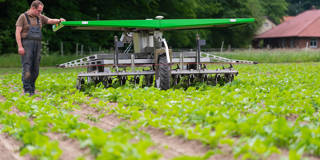The Second Green Revolution Will Be Digitized
Six decades after the Green Revolution began, the rise of robotics and artificial intelligence may usher in another agricultural transformation. By enabling farmers to grow more while using fewer resources and generating less waste, these tools could make food more sustainable, accessible, and cheaper to produce.

ROME – Farming is one of the world’s oldest and most far-reaching endeavors. Meeting the growing food demands of the global population – projected to reach ten billion by 2050 – amid accelerating climate change presents an unprecedented high-wire act that requires human ingenuity, good governance, and technology.